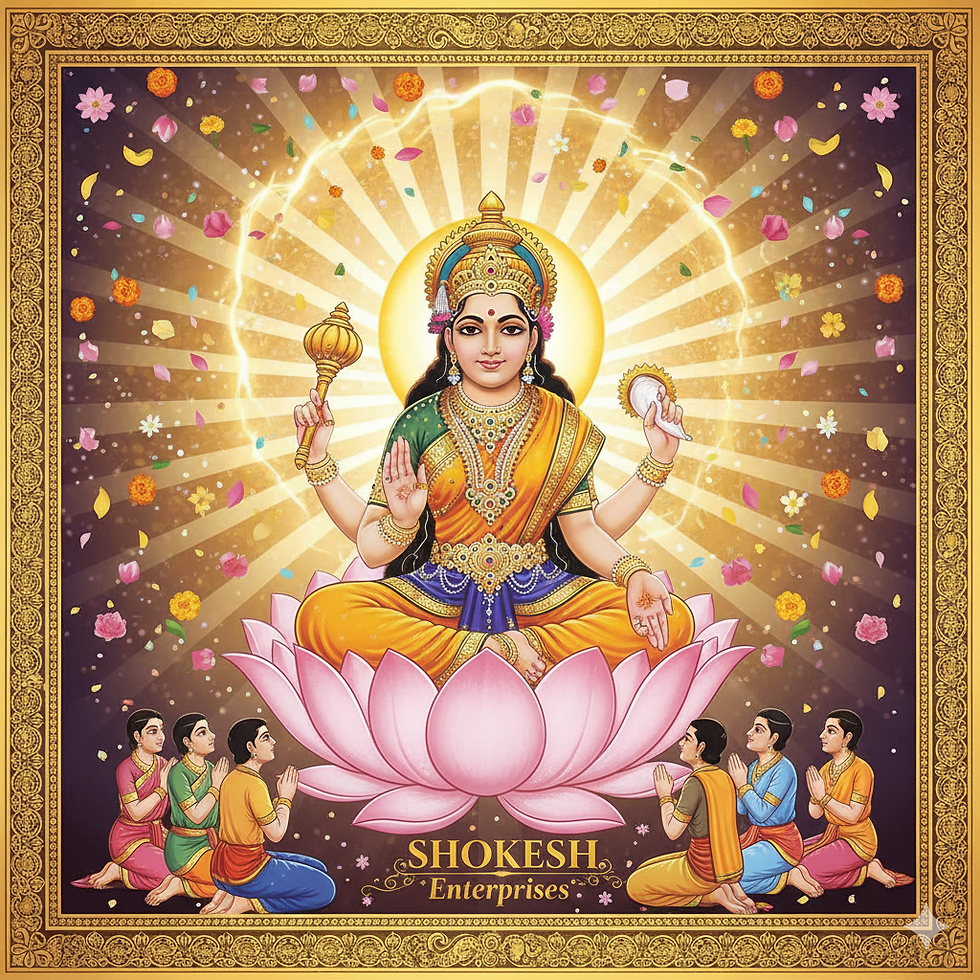
Navratri Day One: Worship of Maa Shailaputri – Significance, Story, and Rituals
- _Shokesh _

- Mar 30
- 3 min read
Navratri Day One: Worship of Maa Shailaputri – Significance, Story, and Rituals

Navratri, a nine-day Hindu festival, begins with the worship of Maa Shailaputri, the first form of Goddess Durga. The name 'Shailaputri' means 'Daughter of the Mountain' (Shaila = Mountain, Putri = Daughter). She symbolizes strength, purity, and devotion, and is worshipped on the first day of Navratri to invoke blessings for a strong spiritual foundation.
Story of Maa Shailaputri
According to Hindu mythology, Maa Shailaputri was born as Sati, the daughter of King Daksha, in her previous birth. She was deeply devoted to Lord Shiva and married him against her father’s wishes. However, during a grand yajna (sacrificial ritual) organized by Daksha, he insulted Lord Shiva. Unable to bear the humiliation, Sati self-immolated in the fire of the yajna.
In her next birth, she was reborn as Shailaputri, the daughter of King Himavan (the king of the Himalayas). She performed intense penance and eventually reunited with Lord Shiva. As the embodiment of nature and divine energy, she represents the essence of Navratri’s spiritual journey—leaving behind ego and embracing devotion.
Symbolism and Appearance
Maa Shailaputri is depicted as a graceful goddess riding a bull (Nandi), holding a trident (Trishul) in her right hand and a lotus in her left. The bull signifies dharma (righteousness), the trident represents power and courage, and the lotus symbolizes purity and spiritual enlightenment.

Rituals of Day One of Navratri
1. Ghatasthapana (Kalash Sthapana)
Devotees initiate Navratri by performing Ghatasthapana, a ritual where a sacred kalash (pot) filled with water, mango leaves, and coconut is placed in the puja area, symbolizing Goddess Durga’s arrival.
2. Maa Shailaputri Puja
The goddess is offered fresh flowers, ghee, milk, and white-colored sweets, as white is her associated color, signifying peace and purity.
Devotees recite Durga Saptashati, Devi Kavach, and Shailaputri Stotra for divine blessings.
3. Fasting and Devotion
Many devotees observe fasts on this day, consuming only fruits and satvik food.
Meditating on Maa Shailaputri helps in removing obstacles and instilling inner strength.
4. Kumari Puja
Some devotees perform Kumari Puja, where young girls are worshipped as the embodiment of Goddess Durga.
Examples of Devotion
In Varanasi, thousands of devotees gather at Kashi Vishwanath Temple to perform special prayers dedicated to Maa Shailaputri.
In Gujarat and Rajasthan, the first day of Navratri begins with the beating of dhol and Garba performances in devotion to the goddess.
In West Bengal, Maa Shailaputri’s idol is beautifully adorned in white attire, symbolizing peace and prosperity.
Blessings and Significance of Worshipping Maa Shailaputri
Grants stability and strength: Worshipping her removes doubts and fears, bringing emotional and mental stability.
Purifies the mind and soul: Her divine energy helps in spiritual awakening and self-purification.
Removes planetary doshas: Devotees believe that offering prayers to Maa Shailaputri reduces the malefic effects of the Moon in one’s horoscope.
SHOKESH ENTERPRISES: Your Destination for Navratri Essentials
Celebrate Navratri with devotion and grace with SHOKESH ENTERPRISES. We offer premium Pujan Samagri, traditional outfits, and festive essentials to make your prayers more auspicious. From Havan Samagri, Haldi Kumkum, Ashtagandh Keshav Chandan Tilak, to beautifully designed Navratri attire, we bring you everything you need for an authentic celebration.
Visit us online at SHOKESH.com or shop through our app at app.shokesh.in.
Conclusion
The first day of Navratri sets the foundation for the rest of the festival, reminding us to stay grounded in faith and righteousness. Worshipping Maa Shailaputri brings purity, strength, and a renewed sense of devotion. As Navratri begins, let’s invoke her divine energy and embark on a spiritual journey with sincerity and devotion.
Jai Maa Shailaputri!




















